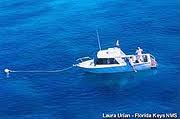|
||||||||||||||||
Add Listing
Sign In
- Home
- About
- Articles
- Contact
- Contribute
- Edit Your Listing
- Fishing Events | Fishing Tournaments
- Fishing and Boating Spots
- Login/Register
- My Favorites
- Privacy Policy
- Submit Your Listing
- Terms & Conditions
- Explore
- Allied Organizations
- Apparel
- Associations and Non-Profits
- Bait and Tackle
- Bars and Restaurants
- Boats, Motors and Parts
- Combos
- Education and Information
- Electronics
- Gear
- Giftware
- Guides and Charters
- Manufacturing Equipment & Supplies
- Marinas, Hotels and Travel
- Media
- Outdoor Equipment
- Real Estate
- Retail Packaging
- Retail Support
- Services
- Specialty Fishing
- Tackle Management
- Add A Listing
- Home
- About
- Explore
- Apparel
- Associations and Non-Profits
- Bait and Tackle
- Bars and Restaurants
- Boat Ramps and Marinas Interactive Maps
- Boats, Motors and Parts
- Florida Artificial Reefs Interactive Map
- Gear
- Giftware
- Guides and Charters
- Marinas, Hotels and Travel
- Manufacturing Equipment & Supplies
- Outdoor Equipment
- Real Estate
- Retail Support
- Services
- Articles
- Fishing Events
- Contact
- Products




